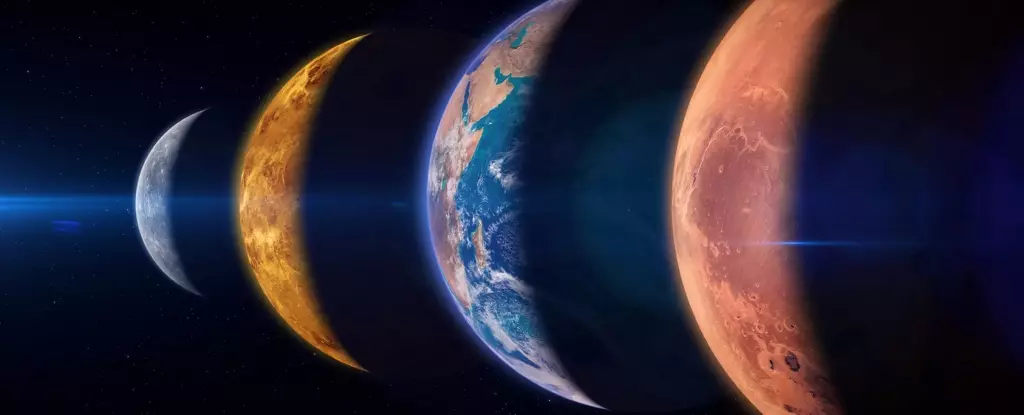On the night of February 28, 2025, skywatchers around the globe will be treated to an exceptional astronomical event—a rare alignment of all seven planets in our Solar System: Mercury, Venus, Mars, Jupiter, Saturn, Uranus, and Neptune. Such an occurrence, where nearly all of the planets line up against the backdrop of shimmering stars, is often dubbed a “great planetary alignment.” This celestial phenomenon provides a unique opportunity for both amateur and seasoned astronomers to experience a truly spectacular cosmic display.
Alignments of this nature happen when celestial bodies are positioned within a close angular distance from each other in the sky. While it is not entirely unusual to witness several planets clustered together, the simultaneous visibility of all seven planets is an extraordinary rarity. In fact, alignments involving five planets are quite commonplace, while six-planet formations are significantly less frequent. Seven-planet alignments can be considered the zenith of these phenomena, marking a moment that many will not see again in their lifetime.
To understand how these alignments occur, one must first grasp the dynamics of planetary orbits. The planets in our Solar System circulate the Sun in an orbital plane known as the ecliptic. As a result of gravitational forces and the processes of celestial formation, these planets maintain this roughly flat configuration, akin to the grooves of a vinyl record. While individual planetary orbits can tilt slightly above or below this plane, their paths remain largely aligned.
Galaxies and star systems, including our solar neighborhood, form from massive clouds of gas and dust. As a baby star begins its life—spinning and attracting material—surrounding gas forms a swirling disk. Over time, this disk facilitates the condensation and formation of planets. This process illustrates how planetary bodies can exist along a relatively defined plane, occasionally clustering on the same side of the Sun due to their distinct orbits.
The viewing experience of this grand alignment will vary based on geographical location. Watching the planets all line up in orderly fashion is not merely restricted to one specific area; enthusiasts around the world can catch glimpses of this luminous display, albeit under differing circumstances. For those eager to engage with the night sky, resources are readily available to enhance your viewing experience.
For instance, platforms such as Time and Date offer interactive tools detailing rise and set times for pivotal planetary bodies on the evening of February 28. Similarly, software like Stellarium helps enthusiasts visualize the celestial layout based on user-defined parameters. Mobile applications such as Sky Tonight utilize local GPS coordinates to display real-time positions of celestial objects, providing an accessible way to connect with the universe.
To fully appreciate the planetary alignment, amateur astronomers are encouraged to equip themselves with binoculars or telescopes. Though some planets can be viewed with the naked eye, those wanting to soak in the intricate details—the colors, the bands, and the unique characteristics—will need optical aids to maximize their astronomical experience.
Effective preparation is key for anyone hoping to witness the grand planetary alignment. It is advisable to start planning well in advance, as the exact viewing times and conditions will differ based on one’s geographical location. One should not only be equipped with the necessary tools, like binoculars and telescopes, but also familiarize themselves with optimal viewing strategies, including selecting a remote location with minimal light pollution and clear horizons.
Moreover, weather conditions play a critical role in witnessing this celestial phenomenon. Clear skies would provide the best viewing experience, so it’s wise to monitor forecasts leading up to the event. By checking local weather patterns, enthusiasts can ensure they maximize their chances of experiencing this astrological spectacle.
The planetary alignment of February 28, 2025, promises to be a mesmerizing event worthy of marvel. As Earthlings gaze up to the heavens, they will not only witness a great celestial alignment but may also form a renewed connection to the cosmos that ignites passion for astronomy in people of all ages. So mark your calendars, familiarize yourself with the tools, and prepare for a night of wonder under the stars!


Leave a Reply